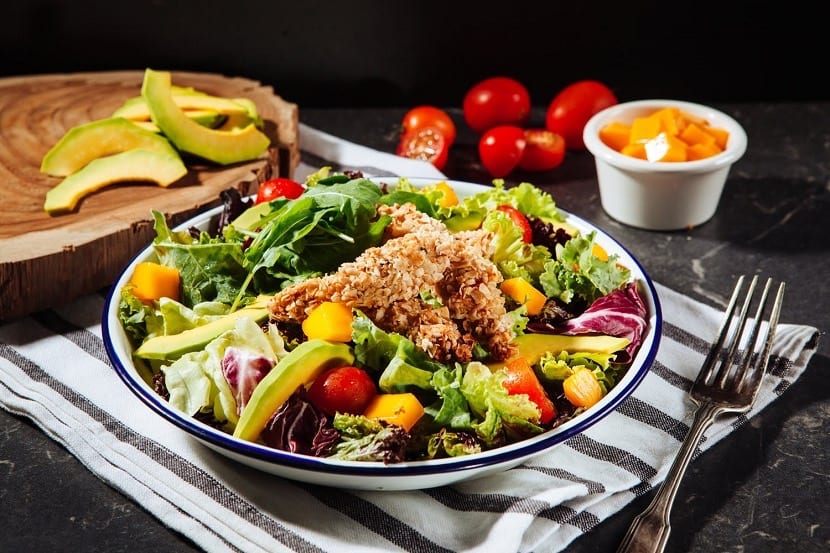
The Gastronomy of the Philippines is a set of culinary customs associated with the inhabitants of the Philippines, this cuisine is highly influenced by both Southeast Asian cuisines and some European ones such as Spanish cuisine. As a general rule, Filipinos traditionally have three meals a day: almusal (breakfast), tanghalian (lunch) and hapunan (dinner), plus an afternoon snack called a snack. Although they can also eat 6 times a day.
By this I mean that in the Philippines food and all its gastronomy are associated not only with food and its meaning, but also part of it, its culture and all its customs.
Pre-Hispanic influence
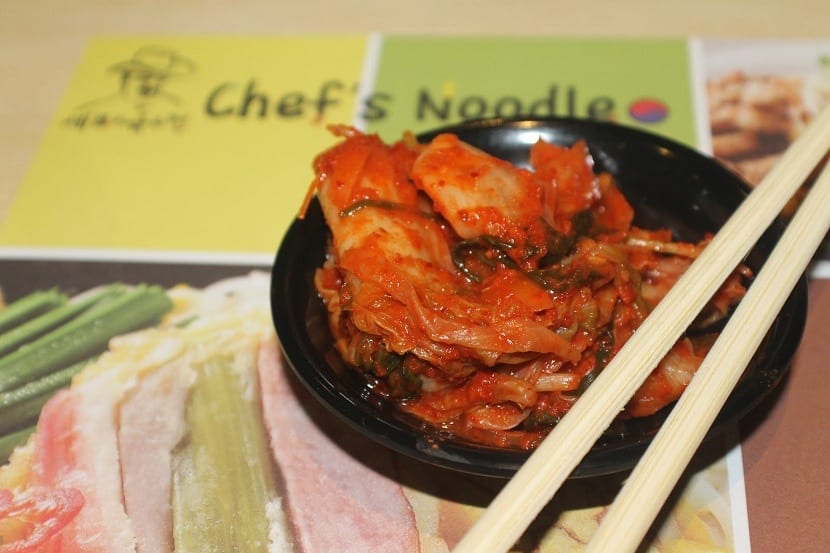
The first influence in the Philippines, in pre-Hispanic times, is noticeable in the preparation of certain foods by cooking in water, steaming, or roasting. These methods are applied to a wide range of foods ranging from carabao (water buffalo), cow, chicken and pork, to shellfish, fish, mollusks, etc. The Malays cultivated rice in Asia from 3200 BC. C. Trade routes in pre-Hispanic times were made with China and India introducing the uses of toyo (soy sauce) and patis (fish sauce) into the Philippine diet, as well as the stir-frying method and the preparation of Asian-style soups.
The arrival of the Spaniards
The arrival of the Spaniards caused some culinary customs to be changed, introducing chili peppers, tomato sauce, corn and the method of sautéing with garlic called stew, which can currently be found defined with this word in Philippine cuisine.. Preservation of some foods with vinegar and spices is used today and is a method introduced by the Spanish in the local cuisine..
There are adaptations to Spanish dishes in Philippine cuisine and they are very popular, such as paella, which in the Philippine version is a kind of Valencian rice, local versions of chorizo, escabeche and adobo.
Chinese influence
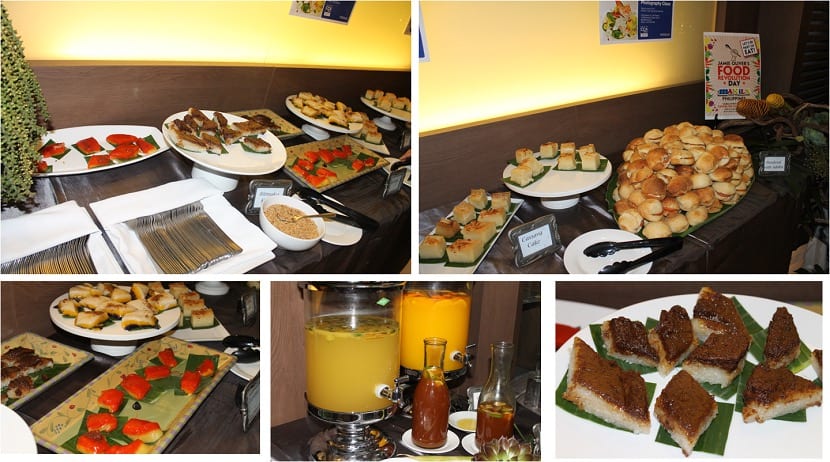
During the nineteenth century, Chinese cuisine began to exert its influence in the form of bakery or noodle shops that began to be established throughout the territory. So much so that sometimes the names are mixed in this way that has arroz caldo (rice and chicken in a broth) and morisqueta tostada (an old term for sinangag or fried rice).
The emergence of other cultures
Since the beginning of the XNUMXth century, the appearance of other cultures brought other styles and that is why, currently, the influence of American, French, Arabic, Italian and Japanese cuisine is noticeable, as well as the introduction of new culinary processes.
Meals in the Philippines
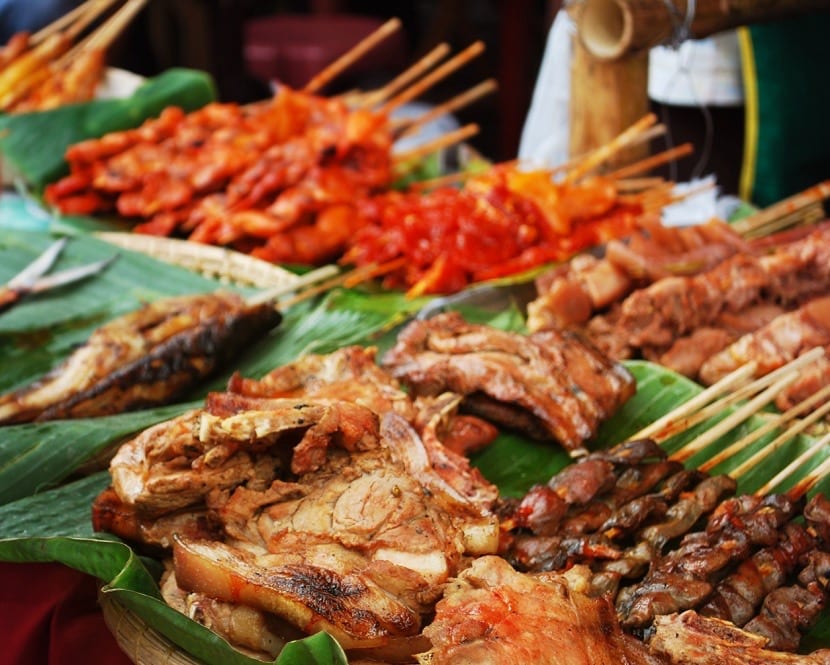
As you may have guessed, Filipinos love to eat that is why they can eat 3 to 6 times a day, making at least 3 complete meals and 2 snacks. A complete meal is usually a combination of rice (steamed or fried) and at least one meal. Fried rice is usually served during breakfast.
The most common cooking methods in the Philippines are adobo (cooked in soy sauce, garlic, and vinegar), sinigang (boiled with a tamarind base), nilaga (boiled with onion), ginataan (cooked with coconut milk), and pinaksiw (cooked in ginger and vinegar), all using one of the following foods: pork, chicken, meat, fish and sometimes vegetables.
Different provinces in the Philippines have their own specialties and dishes that each of its inhabitants enjoy and like to show off to arriving tourists. These regional delicacies are usually prepared during the festivities (a major festival in honor of a saint) and some serve as the main source of income for localities that are even exported to other countries.
Street food
If you go to the Philippines you will see many street vendors selling mais (sweet corn), barbecued pork, chicken and plantain, chicharrón (pork skin or ears, chicken skin or organ meats), squid balls, fish, squid, eggs, peanuts, the famous Balut (a cooked duck embryo that is considered a delicacy), hard-boiled eggs, rice sandwiches… and much more.
Food in street stalls is cheaper than if you go to a restaurant, but food hygiene can leave a lot to be desired, So if you appreciate your health, you will prefer to go to a quieter place to eat to try these new and different dishes.
Do you know what the Pulutan is?
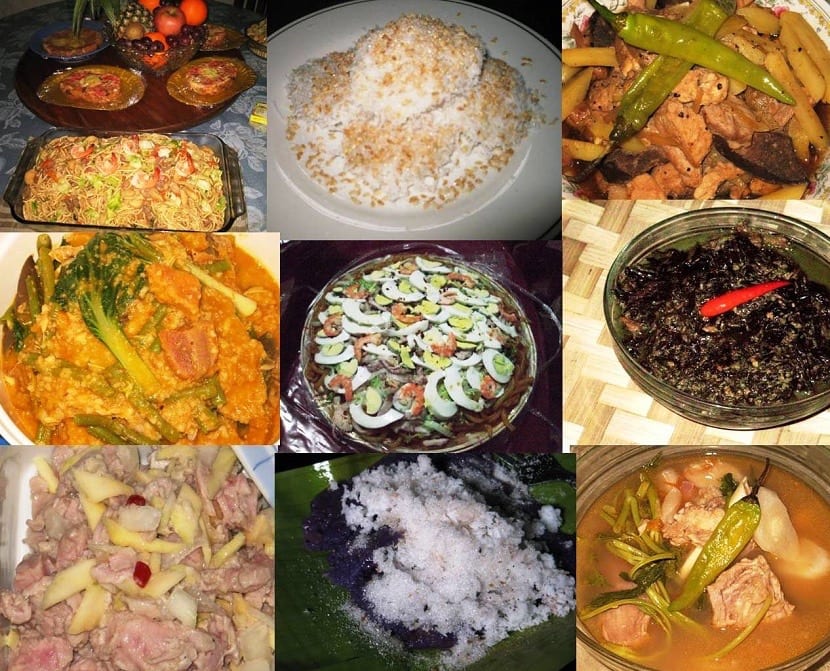
Pulutan is the food that is eaten with alcoholic beverages. Almost anything you can find on a restaurant menu you can buy to eat while drinking alcohol. The most popular pulutan are fried potatoes with tomato sauce, sausage, baboy tokwa't (fried soy and tofu), kikiam, fish, squid or chicken balls, fried chicken, battered fried calamari (squid rings) and many other foods.
To consider
If you travel to the Philippines you should know that the gastronomy is different from what you are used to in your country, but that with an open mind you may be able to enjoy and even repeat. In addition, you will also be able to find within its gastronomy dishes preferred by tourists, seafood, vegetarian food, many fruits and foods that you can find in the corner supermarket.
What really matters when you travel to the Philippines is that you know where you have to eat, remember that hygiene in street stalls is not good and you could catch a gastrointestinal disease. It is more worth paying a little more and eating good quality food. If you are staying in a hotel, I advise you before going out for dinner or lunch in the city, ask the hotel manager for advice on popular places to dine or eat and that the tourists who have been previously have been satisfied. Do not go on your own without knowing the places since as in all places, if you want to eat for value for money, you should know where you are going.